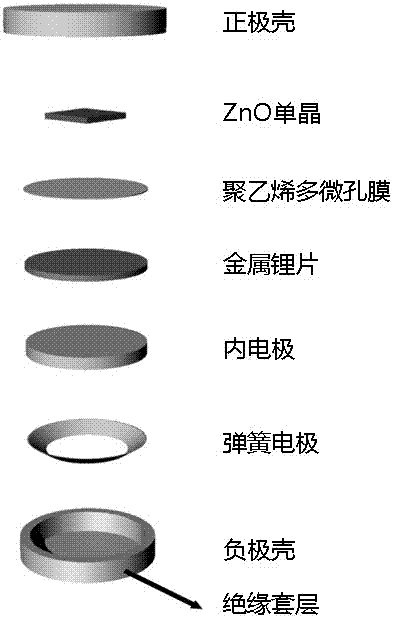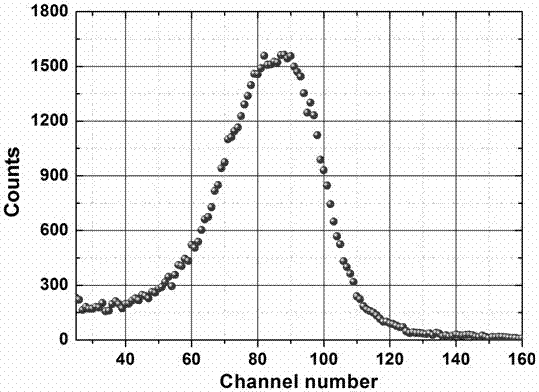A kind of high-resistivity single crystal ZnO-based radiation detection device and its preparation method and application
A radiation detector and high resistivity technology, applied in the field of radiation detectors, can solve problems such as difficult to guarantee the stability and reliability of device performance, limit the application of detector devices, and weak radiation resistance, and achieve good promotion and application prospects. Uniform and controllable film thickness, strong radiation resistance
- Summary
- Abstract
- Description
- Claims
- Application Information
AI Technical Summary
Problems solved by technology
Method used
Image
Examples
Embodiment 1
[0059] 1. Preparation of high resistivity ZnO single crystal
[0060] (1) Press a 10 cm square high-quality low-resistance zinc oxide wafer in an argon-filled glove box at room temperature figure 1 The shown sequence was assembled into a commercial CR 2032 battery case, where the electrolyte used was a 1M LiPF6 solution dispersed in a 4:3:3 mixed solution of ethylene carbonate, ethyl methyl carbonate and diethyl carbonate , using Celgard 2400 polyethylene microporous membrane as the electronic separator.
[0061] The implantation of lithium into the ZnO single crystal was realized by the constant current discharge treatment at room temperature by the LAND BT2013A multi-channel battery test system.
[0062] The thickness of the high-quality low-resistance zinc oxide wafer used in this example is 0.3 mm, the constant-current discharge current is set to 3 microamps, and the discharge time is set to 15 hours.
[0063] (2) The lithium-infused zinc oxide wafer processed in the abo...
Embodiment 2
[0075] 1. Preparation of high resistivity ZnO single crystal, the method is the same as that of Example 1.
[0076] 2. Preparation of high-resistivity single-crystal ZnO-based radiation detection devices
[0077] Using thermal / electron beam evaporation method, according to Figure 4 In the sequence shown, a double-layer metal electrode of 35 nm titanium and 20 nm gold vapor-deposited on one side surface of a high-resistivity ZnO wafer.
[0078] A thicker metal indium electrode is then plated on the other side of the ZnO wafer.
[0079] The electrodes on both sides form good electrical contact.
[0080] The wafer is bonded to the circuit board using molten indium by heating the device. And connect the chip to the circuit board through gold wires.
[0081] 3. Test
[0082] The obtained high-resistance ZnO-based detection device is placed in a vacuum, thereby reducing the energy loss of alpha particles during flight. Detector response testing using from 243 Am- 244 The Cm...
PUM
 Login to View More
Login to View More Abstract
Description
Claims
Application Information
 Login to View More
Login to View More - R&D
- Intellectual Property
- Life Sciences
- Materials
- Tech Scout
- Unparalleled Data Quality
- Higher Quality Content
- 60% Fewer Hallucinations
Browse by: Latest US Patents, China's latest patents, Technical Efficacy Thesaurus, Application Domain, Technology Topic, Popular Technical Reports.
© 2025 PatSnap. All rights reserved.Legal|Privacy policy|Modern Slavery Act Transparency Statement|Sitemap|About US| Contact US: help@patsnap.com



